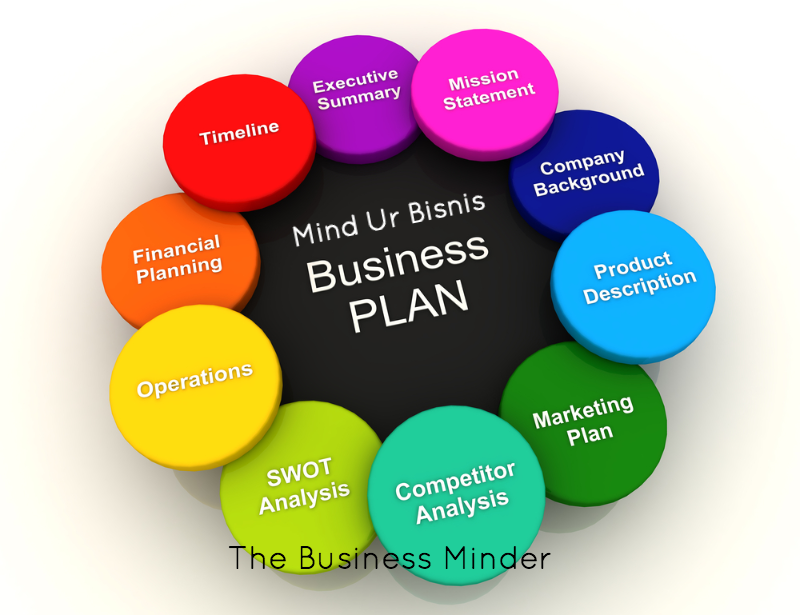How to make a Business Plan - What gets included
- The Business Minder
- Feb 3, 2015
- 4 min read

At Mind Ur Bisnis the Business Minder helps you to create your very own Business Plan.
Every business needs a business plan. To know where you are going, you have to know where you came from and what came before you. No matter if you are a startup or a full-fledged, profitable organization, you will need one. So here for you are the key elements of a winning business plan.
1. Executive Summary
An executive summary is a one or two page summary of your entire business plan. It's often easiest to write your executive summary after you've finalized all the details within the plan itself.
2. Mission Statement
This is not essential particularly for start-ups. Your mission statement is a one sentence statement about your company's ethics, culture, and norms for decision-making.
3. Company Background
In your company background or business description, you'll need to include and define various aspects of your service offerings, the history of your field and any current happenings and your personal goals and objectives, elements that add to your success and the ownership of your business. This section is the backbone of your business plan and will set the stage for the information included in the rest of the plan.
4. Product and Services Description
Everyone has a product or service that they are offering to a prospective client. You should be able to describe what it is that you are selling as well as identify what makes your product or service unique.
5. Marketing Plan
This section is very important. It gives you a window into your industry, the state of the market, general costs, how business is acquired and also affords you an opportunity to distinguish yourself from competitors.
While you are making the most of this section, also realize that just as people who walk by physical stores on the street can see what's going on at a place of business, visitors to your website also have the ability to browse your merchandise and become familiar with your personal branding.
Make your website your online storefront both in thought and deed. Consider the following:
You can provide samples or demonstrations of your product.
Graphics and or photographs are your visual marketing materials.
The URL (website address) is your "location."
Equipment that you use and product delivery methods are manufacturing and shipping tools.
Website navigation is like the layout of a physical store.
If you have a site map, it helps to direct people to what they are looking for like a map in a department store.
Showcasing testimonials, affiliations and experience in easily accessible areas of your website builds credibility and instills trust with a customer.
Presenting your contact information enables people to do business with you. Detailing information about yourself, even though you aren't actually in the presence of a prospective customer, gives a good first impression of your personality, qualifications and services.
Rather than just thinking of your website as a dormant place to tack your name on, kick it up a notch and view your website as an online storefront -- the place where business gets done.
6. Operations
This purpose of this section is to help you outline the more administrative side of your business, including how you operate, where your office is located, your staff or assistant if applicable, equipment, overhead and other expenses, legal relationships, your network of suppliers and credit policies.
If you have a few advisers or people who help you to manage your business, this is where you acknowledge their involvement and the capacity by which they contribute to your overall success. Also, if there is a hierarchy of positions within your company, you would detail that hierarchy and the relevancy of each relationship.
7. SWOT Analysis
This is where you can workshop with us and your team and come up with your Strengths, Weaknesses, Opportunities and Threats.
8. Competitor Analysis
You need to understand who are your competitors and imitators and what are their strengths and weknesses.
9. Financial Planning
Now, back to reality! You'll need to provide a record of your financial dealings, investments, if any, and how you came to the position you are in today. With some flexibility, you can project how your company will be operating and assess your financial status, including how things balance out at the end of each month, the overall financial health of your business and your cash flow.
10. Timeline
A plan for your growth for start ups; and a history plus a time plan for established businesses
Other aspects of Business Planning can include
Development
This is where you can dream a bit. Not everything in this section is based upon pure fact like the information you would have provided in the other sections. Project into the future and think big. Development is a necessary part of business to remain competitive, so be sure to spend a significant amount of time when writing this part of your plan.
Vision Plan
this describes how your business will look and feel and about the culture you want to project
Core Beliefs and Values
this can be included into your vision plan. For example the Core Veliefs and Values of Mind Ur Bisnis are described in M.I.N.D.E.R in our story about our business.
Mind Ur Bisnis can step in and help you with this process. Call The Business Minder today.









































Comments